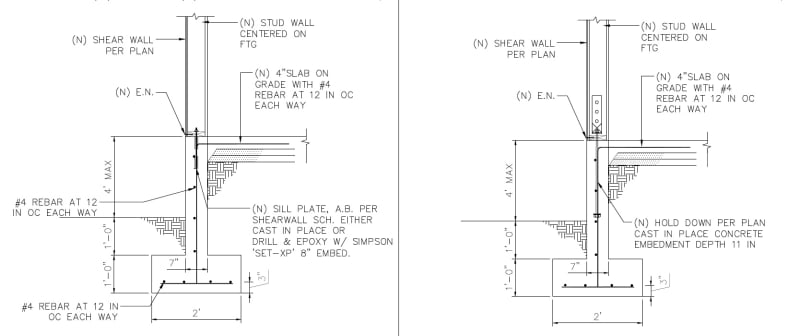Sendit100
Structural
- May 27, 2022
- 1
Hi everyone. I've got a new engineer doing a structural observation report on a job I'm building and he's telling me I can't do a slab between stem walls, and that the slab must be on top of the stem walls or be a monolithic pour of slab and stemwalls together though nothing in our plan specifically calls that out. The slab details in my plans show the slab between the stemwalls (see below) but he's claiming that this is a "drafting error". I've done slabs both between stem walls and poured on top as the circumstances dictate, but this time it makes more sense to me to pour the stemwalls first, then pour the slab between the stemwalls at a later date, not least because the stemwalls are 4' high. Anyone want to weigh in on this? The slab is all going to be covered with floating floors when it's done so the appearance of the concrete finish doesn't matter so long as it's flat, and while I may be dumb, my forms are level in both directions and within a 16th of an inch of the hight where we need the slab to be. #4 rebar extends down the stemwall and bends out into where the slab will go 2" below the tops of my forms so we're covered there. Thoughts?



![[pipe] [pipe] [pipe]](/data/assets/smilies/pipe.gif)